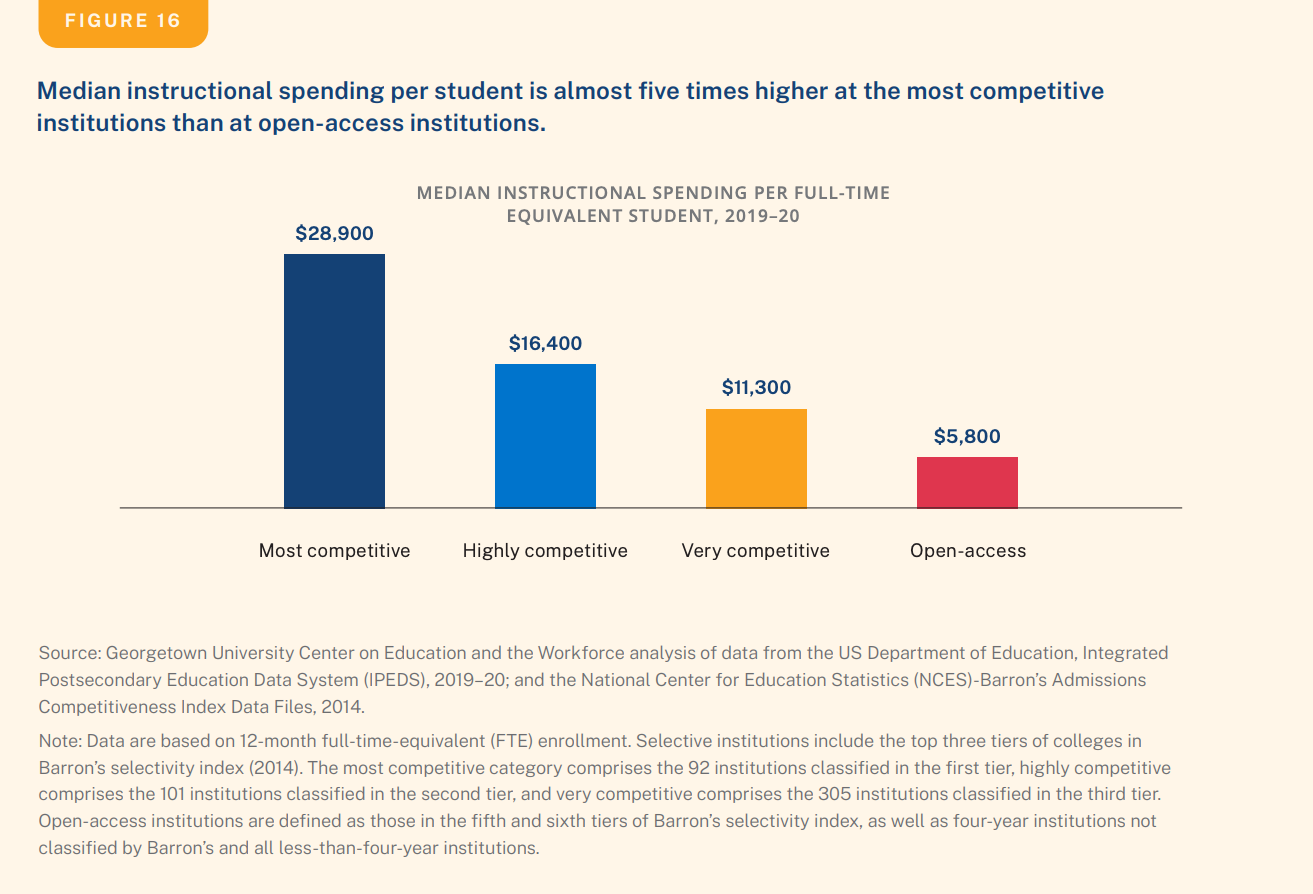I wrote last week about the very unequal resources available to students enrolled in colleges with highly competitive admissions and those attending more open campuses, including this graphic illustrating the disparities:

This week, my social media feeds served up a case study of these disparities when multiple people shared this 2021 article about a real engine of social mobility, the City University of New York. The data on their successes with low-income students is very impressive:
As the New York Times summarized these findings, CUNY “propelled almost six times as many low-income students into the middle class and beyond as all eight Ivy League campuses, plus Duke, M.I.T., Stanford and Chicago, combined.” If policymakers and philanthropists want to address the gap between haves and have-nots, CUNY is a place to start.
Yet the article is about CUNY's endless financial struggles (in 2021, when it was published, the struggles were further exacerbated by COVID) in spite of how well they serve their students.
Meanwhile, the Ivy Leagues sit on billions in their endowments.
More than half of the CUNY students are from households earning less than $30,000 a year and 44% are first-generation students. The colleges have long struggled to remain affordable so that these students don't begin careers deeply in debt. And for many of their students, they are succeeding.
Because of public policy, CUNY constantly struggles for resources while those billions in the Ivy League and Ivy Plus colleges remain untaxed.
This is not a system designed to level playing fields and not a system that sustains an understanding of college as a public good.
It is a system that can be changed.




